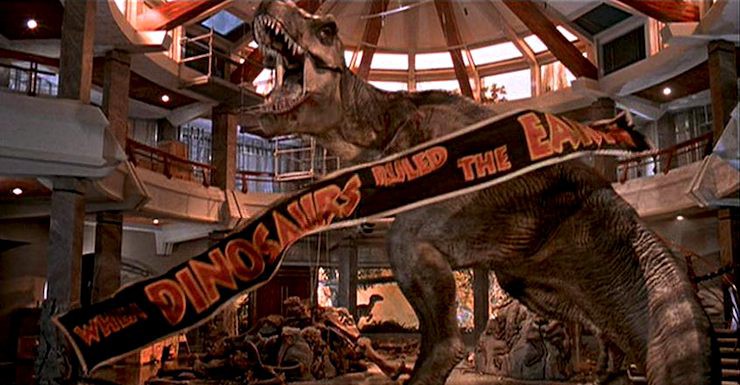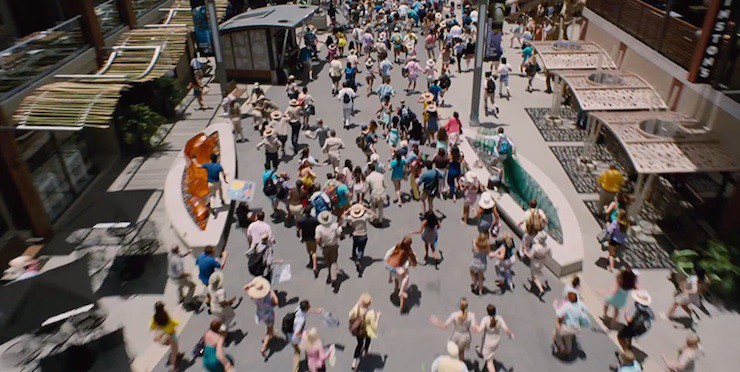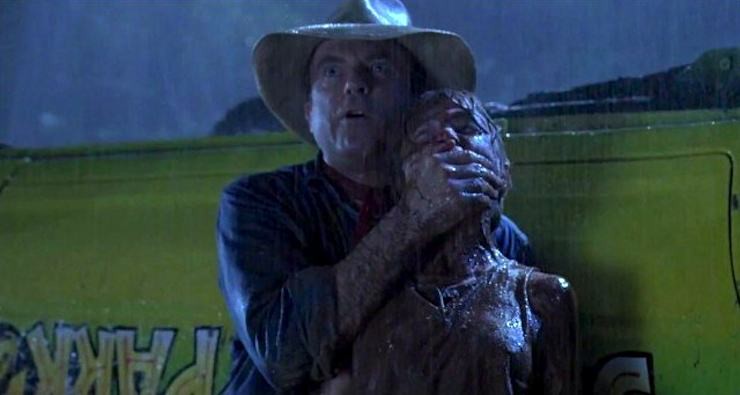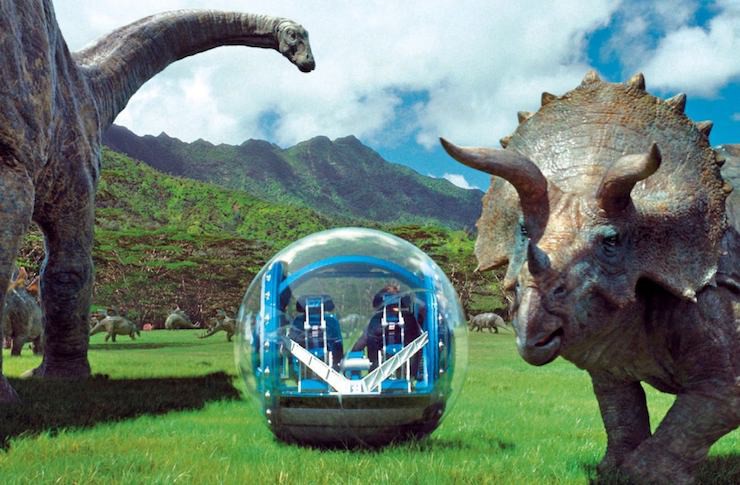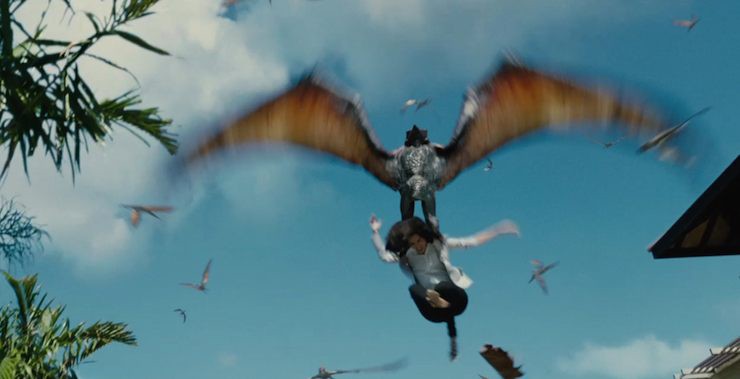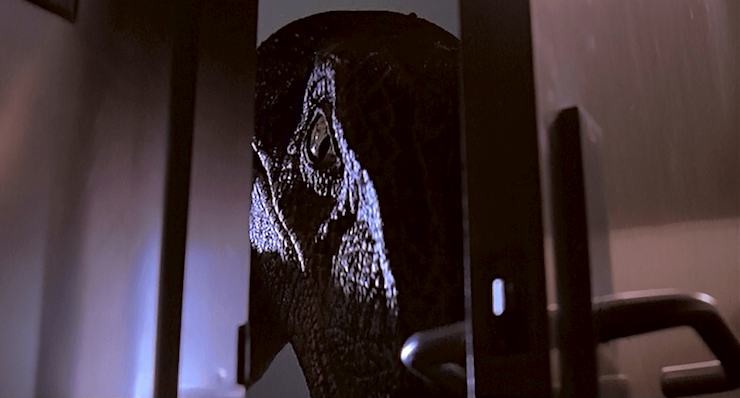It’s a beautiful day at Jurassic World. The sun is shining. The Archaeopteryx are singing. The only annoyance is the seemingly endless visitors trying to take a selfie with the Baryonyx in the background, but it’s hard to begrudge them that. It’s hard to be unhappy when surrounded by dinosaurs.
But then the screaming starts. At first you think some kid got a little nervous about seeing Triceratops in the flesh. Dinosaurs can be more than a little intimidating up close. But you know that’s not right. There’s too much depth to the cry, and it’s getting louder. By the time you turn around to see where all the commotion is coming from, the Tyrannosaurus has already stepping into view from behind the gift shop with half a tourist sliding down its jaws, tatters of Hawaiian shirt dangling between its teeth. Damn.
If you’re going to survive the terror that follows, there are a few things you should do. They won’t guarantee your safety, but they’ll definitely help your survival.
1: Run
Forget what Alan Grant said. He probably came up with the “T. rex can’t see you if you don’t move” idea to make his book more controversial and sell more copies. There’s no way he could have determined that from the fossil record, and, with a large portion of the brain devoted to analyzing scents, the dinosaur would probably be able to sniff you out, anyway.
Your only hope is to start sprinting before the T. rex notices you. You’d better hope that you have a big head start. At top speed, T. rex can move at about 25 miles per hour. That might not seem like much, but, unless you’re Usain Bolt, you’re not going to outpace the dinosaur. The best you can hope for is that you get going before you’re spotting. I know that sprinting into the park’s Margaritaville and diving behind the bar might not be the most dignified moment of your life, but it’s better than winding up as dino droppings.
2: Don’t Scream
Screaming feels like the natural thing to do while being chased by a dinosaur, but it’s probably best to resist the urge. Large predatory dinosaurs like Tyrannosaurus and Allosaurus have ears attuned to low frequency sounds. Speaking normally probably won’t tip them off to your presence, but a scream will hit just the edge of the frequency they’re capable of picking up. Then again, if everyone is screaming – which seems likely – you can probably join in without worrying about being literally picked out of the crowd.
3: Steer Clear of Herbivores
If you see a Triceratops wanders out of its pen, just leave it be. The dinosaur isn’t going to be your friend. Big herbivores can be just as dangerous, if not moreso, than predators. Think of how many people each year are injured or killed by large herbivorous mammals like bison and water buffalo today. Triceratops can be just as ill-tempered – scrapes and lesions on their frills are from when the Cretaceous heavyweights lock horns. And you’d best avoid Stegosaurus, too. The dinosaur really does have a brain roughly the size of a walnut, meaning that it might not be smart enough to recognize you as a well-intentioned human. More likely, the Stegosaurus will feel threatened by the noisy pink thing getting so close to it and whip its tail around at a speed of ten meters a second – quick enough to pierce bone.
4: Don’t Worry About the Pterosaurs. Much.
Pterosaurs might look a little intimidating up close. Their leathery wings, stretched out over extraordinarily-elongated fourth fingers, make them look like reptilian versions of bats, and almost every movie that includes them shows them carrying off hapless humans with their talons. But don’t fear them. Pterosaurs were extraordinarily light for their size. They have to be in order to fly. Pteranodon, Dimorphodon, and their relatives simply don’t have the strength to lift you off the ground, and their feet aren’t as meat-hook-like as the silver screen suggests. The only danger you’d face would be from the largest pterosaurs – ones like Quetzalcoatlus that stood as tall as a giraffe on the ground. Some of these might be big enough to waddle after you and do you in with their immense, toothless beaks, but you should be able to outrun them.
5: Doors are your friend
We all know what happened with the raptors in the 1993 incident—doors provided no safety. But if the newer versions are anything like their actual prehistoric counterparts, they won’t be able to pull the same trick twice. The wrists of Velociraptor aren’t as flexible as ours. They’re more like those of a chicken (think of the wings you might order at a pub), which means that they had to hold their hands with palms facing each other. They might gain a little purchase on a door handle, but it’s anatomically impossible for them to be the consummate locksmiths they were during their initial resurrection on Isla Nublar.










